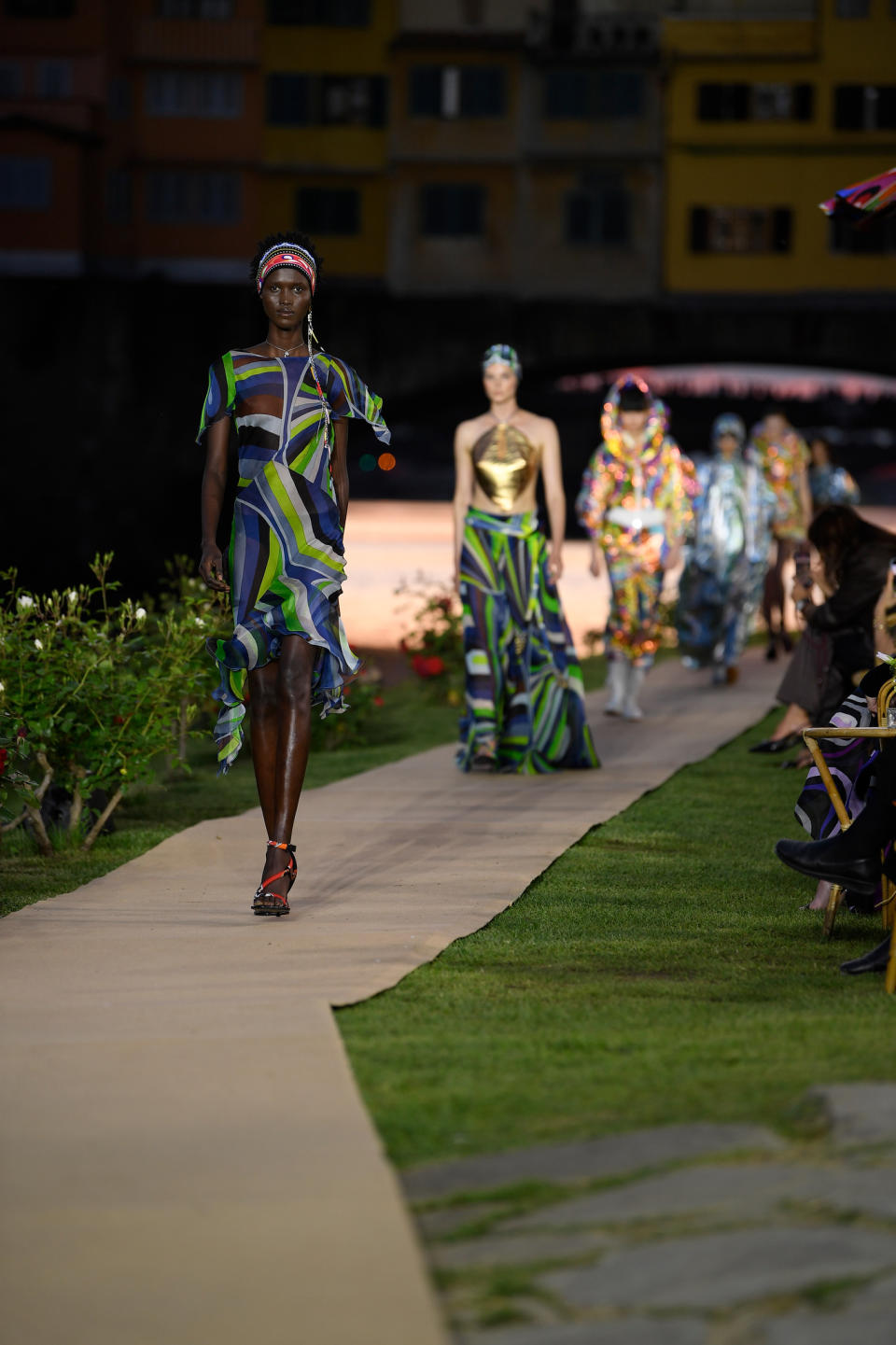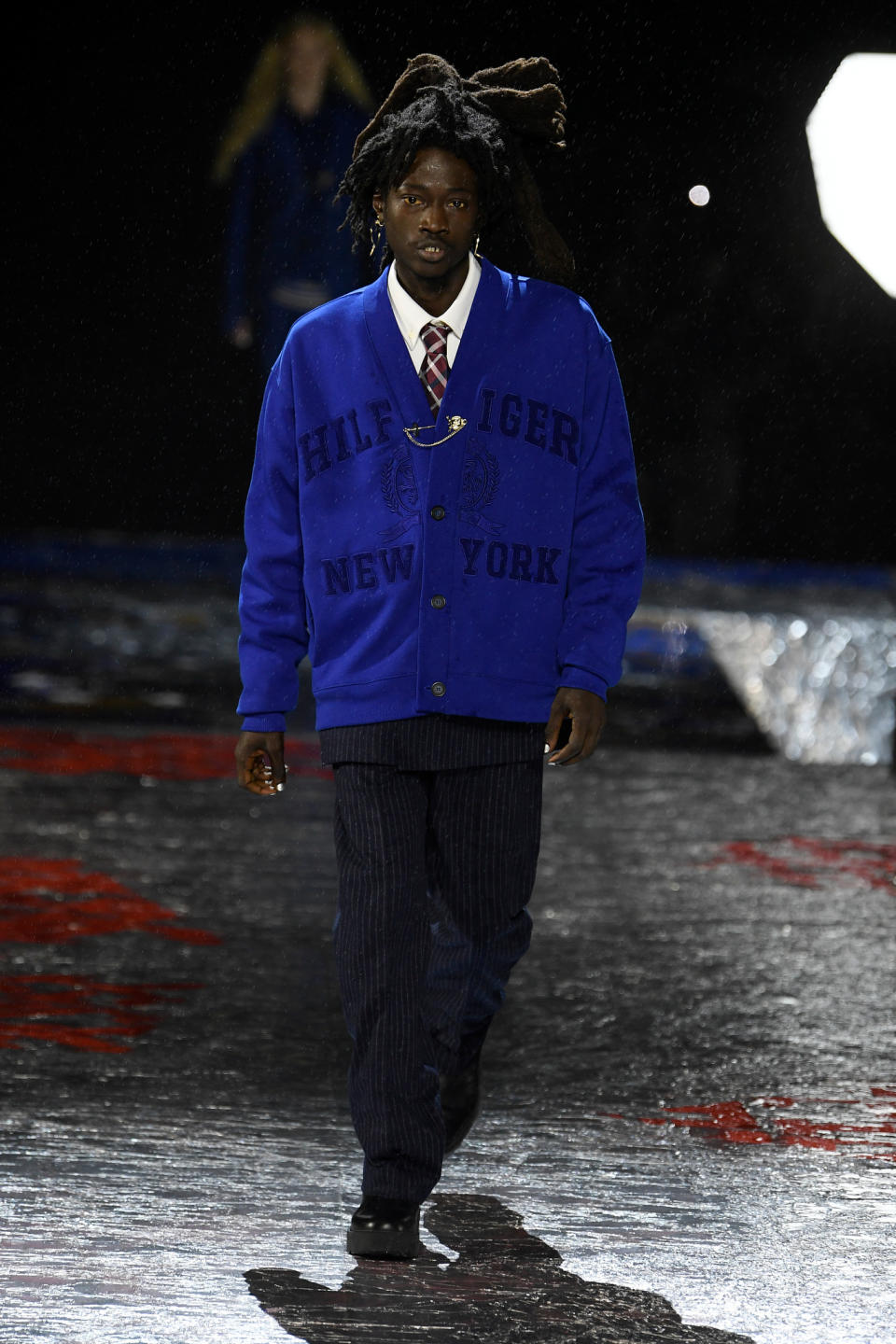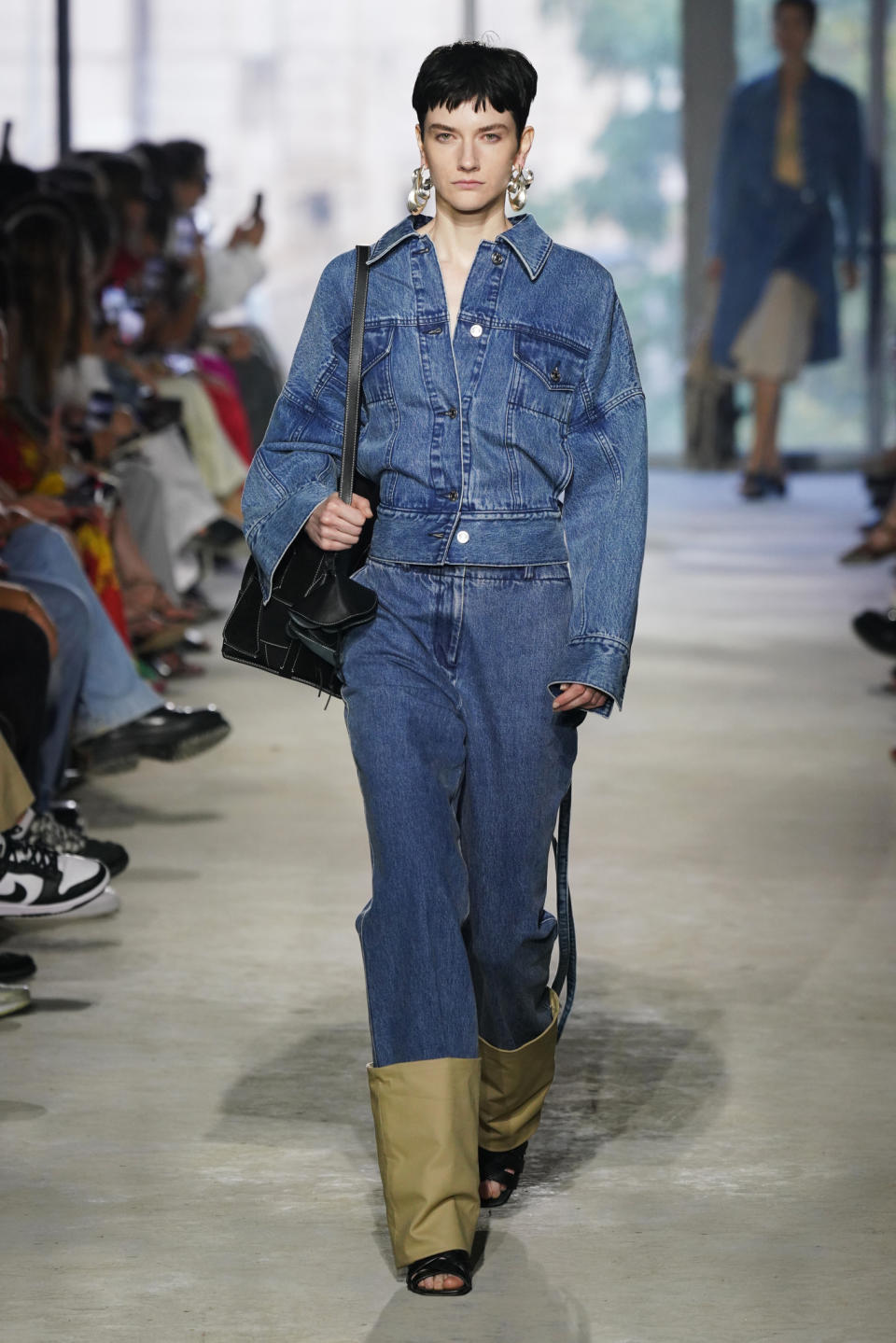Why ‘See Now, Buy Now’ Shows Are Withering

Bye for now, see now, buy now shows.
That seems to be the fashion industry’s prevailing sentiment toward a format that was a big disruptor when it emerged in 2016 but whose use is dwindling, or at best intermittent.
More from WWD
After New York Fashion Week, Security and Civility Discussed
Michael Kors Wins Social Engagement During NYFW, Followed by Tory Burch and Ralph Lauren
Mugler was the latest designer name to pivot away from see now, buy now (SNBN) and return to Paris Fashion Week in September and show a spring 2024 collection, roughly six months before it will be delivered to consumers.
Tom Ford and Ralph Lauren are among other marquee brands that also relinquished the SNBN format in recent years.
Notable stalwarts include Jacquemus, Emilio Pucci and Hugo Boss, whose Sept. 22 show during Milan Fashion Week will be SNBN, and will debut a sustainable outerwear capsule crafted from the HeiQ AeoniQ fabric.
Boss embraced the format seasons ago as part of a broader rebranding push aimed at a younger clientele. The German brand took its pyrotechnics-filled spectacles to several destinations, embracing fashion’s destination show trend.
The return of physical fashion shows, now more spectacular than ever thanks to entertainment elements, surprised many after the pandemic years of fashion films and online look book drops — but not consumers, who consume such IRL content in droves.

Aggregate insights compiled by data firm Launchmetrics for WWD underscore that brands have a better chance of winning the attention sweepstakes if they show during an organized international fashion week than off-schedule.
“Showing at fashion week proves to be successful in increasing brands’ reach, exposure, and performance,” according to Launchmetrics, which calculated that on average, brands get up to four times more coverage when showing during fashion week versus off-season.
Brands see an increase of up to 180 percent in Media Impact Value, a proprietary Launchmetrics measurement of relevant media placements on all channels (online, social and print), during months when there are fashion weeks versus other months of the year.
What’s more, brands that show during fashion week can expand their exposure to at least three, and as many as seven, new markets, according to the data firm.
Launchmetrics said its data clearly indicates that the show itself generates impact, with faint interest in the see now, buy now aspect.
For example, Mugler’s last runway show generated $6.3 million in media impact value, with SNBN keywords worth 1 percent of the total.
Ditto for the recent Jacquemus show at the Château de Versailles, which earned $13.7 million in MIV, with SNBN keywords worth 0.2 percent.
A darling on social media, designer Simon Porte Jacquemus shifted to a seasonless model in 2021, making his coed “La Montagne” collection available to buy immediately after the show.
Back in 2015, the Council of Fashion Designers of America commissioned the Boston Consulting Group to undertake an extensive study to define the future of fashion shows with the aim of fixing what many industry experts considered a broken system. The result of the six-week study was that the time was ripe for change, and future approaches depended on each brand, their tier and in-house strategy for advice on how to fix the industry.
“Something’s not right anymore because of social media. People are confused,” said then-CFDA chairman Diane von Furstenberg to WWD, noting the six-month lag between the moment clothes appear in Instagram feeds and when they hit store shelves. The way things are right now, “The only people who benefit are the people who copy” runway trends. Several brands tried see now, buy now shows to varying degrees of success, and practically all abandoned the idea except for Tommy Hilfiger and Rebecca Minkoff, early adopters of the trend. The CFDA declined comment for this story, as did Saks Fifth Avenue.
A WWD survey of SNBN practitioners suggest the format still has its values, but is likely to be used selectively by most brands.
Hilfilger had a successful string of SNBN fashion shows, most recently in September 2022 when it hosted a spectacle at the Skyline Drive-In in Brooklyn, amalgamating past, present and future clashes of culture, art, music, and fashion in a deconstructed “Tommy Factory” artistic space.

Over the years “TommyNow” fashion shows, with elaborate themes and sets, took place in New York City, Los Angeles, London, Milan, Shanghai and Paris, with looks that were available immediately across dozens of countries online at tommy.com, in Tommy Hilfiger stores, and at select wholesale partners and on social media.
The company didn’t show in New York this month and is in the midst of shaping up its show plans for 2024.
SNBN has “moved off the fashion week runway and into the cultural conversation. Everything we do today, from F1 campaigns to talent partnerships to fashion week parties, is about a 24/7 see now, buy now ecosystem around tommy.com,” Hilfiger told WWD, referring to the Tommy x Mercedes-AMG F1 x Awake NY merchandise available last May during a race in Miami. “In the future, our runway shows will have immediate delivery on certain items, and seasonally, we find new ways to deliver that instant gratification and feeling of being a part of something that was previously only for an exclusive few.”
Brands have felt that all the hype created by the fashion shows left the consumer frustrated because he or she couldn’t buy the merchandise for six months. And wouldn’t it be great to have it in-store when they see it on social media?
Rebecca Minkoff, the accessories and lifestyle brand, has done SNBN collections in the past, although last fall she showed a season ahead. While most designers paraded spring 2024 lines during New York Fashion Week, Minkoff hosted a party and showcased fall merchandise that just hit online and physical stores.
“For us, it’s not black and white. My goal is we’re always experimenting and we’re always trying new things,” she said. “What I can tell you is our customer buys in season. If we put something up on the site that’s fall-forward in August, she’s not buying it under October.”
She said she hasn’t made up her mind what she will show come the next NYFW in February. Minkoff said she can switch back and forth because she doesn’t change her manufacturing process.
“We still are showing on the buying calendar. We never changed it, that was the missing link for most people. We never changed when you have to place your buy. All that changed is when we released it to the public for media and marketing,” she said.
After the wholesale campaign, “we then come armed with data of what stylists, press and media are liking and what the buyers bought, and we can make sure our content calendar and our marketing cadence matches the most invested pieces so we’re a lot smarter with that data,” she said.
“I think overall, it’s been incredibly successful to capitalize on viewing this as the beginning of the top of a funnel as far as the marketing activity with all eyeballs focused on these two major weeks of the year, and how do we push her down the funnel to actually purchase product that’s available, with the excitement that is happening and the newness and ‘I want it now.’ For us to talk about this in an exciting way and to be something she can really actualize, for us really works,” said Minkoff.
In addition, she said with sustainability being top of mind for so many brands, “if more brands did adopt this, you’d cut off the ability for fast-fashion to see the shows, copy it and get it into the doors before the actual brands ships. So you’d hope the consumer would wait and buy it from the actual brand. That already mitigates a huge potential amount of waste.”
SNBN, which reduced the standard lag time of many months between runway and store availability, required an accelerated speed to market for brands, disrupting long-held systems and processes in order to speed up the production schedule. Many brands just weren’t able to do that.
Ralph Lauren joined the SNBN brigade in 2016, and guests were able to purchase pieces from the collection right in the Madison Avenue store. The line was also available at Ralph Lauren global flagships and shops immediately after the show. At the time, SNBN aficionados in New York included Tom Ford, Hilfiger, Opening Ceremony and Minkoff.
Lauren has since switched back to the regular cadence, showing his spring 2024 collection during NYFW.
Ford test-drove SNBN for one season and decided it wasn’t for him.
Interestingly, some brands have offered a few pieces for see now, buy now over the years, while the bulk of the line is the regular cadence.
Designer Phillip Lim’s 3.1 Phillip Lim brand is offering consumers an exclusive piece — a denim trucker jacket — from his spring 2024 collection available to shop straight from the runway on the shopping platform Rakuten through Sept. 25 with 10 percent cash back.

Altuzarra is also offering an exclusive knit dress from the spring 2024 collection available immediately to shop from the runway on Rakuten through Sept. 25 with 10 percent cash back.
London-based designer Alice Temperley said SNBN works for her. In the Northern Hemisphere, she said, “people don’t need to buy summer dresses in January or coats in July. See now, buy now means you are selling the right things at the right time.”
Temperley said she thinks in terms of the calendar year and is selling a variety of fabric weights and styles all year round. She has lately been dividing her collections into smaller drops, “so that the customer doesn’t get bored” and can find what they need in-season. “It also means that in places like Dubai I can sell velvet suits in the [British] summer months, and caftans in the winter months.”
The strategy has been working, and she’s not showing or presenting at fashion week this season. Instead, she said she’s focusing on direct-to-consumer sales and doing wholesale orders for the bridal and Temperley London heritage collections only. “We are fluid and moving with the times, and there are exciting things afoot,” she said.
Retailers also see some merit to SNBN.
“This is a valid format for us,” said Federica Montelli, head of fashion at Rinascente in Italy. “We are not focused on it in any specific way, but it often brings good results if the brands set up a strong marketing campaign to support it. We buy very much in advance, and it is then the brand that presents the collection to press and then clients in this order, quickly one after the other.”
Sam Archibald, general business manager of apparel at Macy’s, said: “I think this trend is about how consumers shop. They want what they want, regardless of seasonability. That to me is the most important part of what is happening in trend today. It’s also important to think about the changes of seasonality in business. I think consumers are much more flexible that they don’t transition from spring to fall and fall to winter just because the calendar does.”
The other component of it is the idea of instant gratification. “How consumers are engaging with product and engaging with brands and engaging with marketing,” he said.
One of the exciting examples was Macy’s positioning of Karl Lagerfeld Paris during the period of the Met Gala. “When you think about the products that we were able to put on our floors in conjunction with the Met Gala celebrating Karl, we saw an immediate response with the consumer.” He said there was a large event in fashion and the art world and it was tied to consumers with product.
“As we think about see now, buy now, I think it’s about eventing and understanding the changes in seasonality, and how we approach that as a business,” he said.
He said if you look at the selling today, there are a lot of wear-now bodies in transitional colors that are selling.
He said his Hugo by Hugo Boss, and Vince Camuto and Cece lines are very in tune with moving markets closer to need and getting back to pre-pandemic discussion about shorter supply chain timing.
“I think we’re moving toward a more fluid calendar when it comes to product development. I think it’s a very good thing for the industry and a very good thing for the consumer,” he said.
With contributions from Martino Carrera, Samantha Conti and Luisa Zargani
Best of WWD


